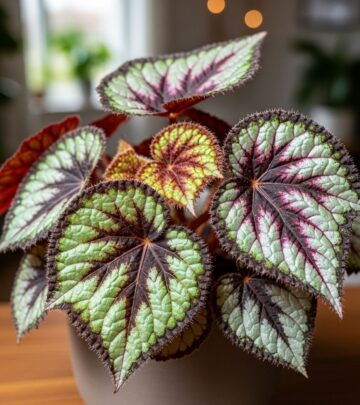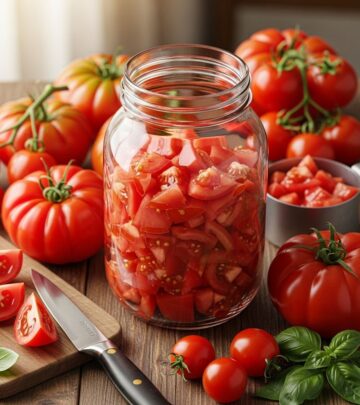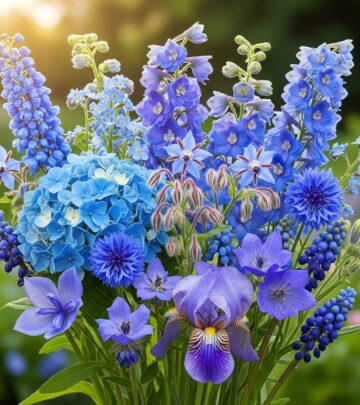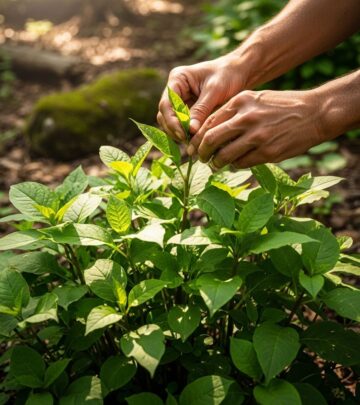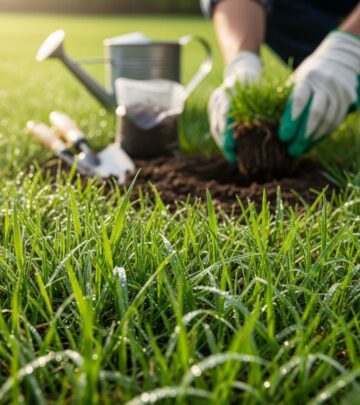Nemesia Plant Care: Complete Guide For Lush Blooms
Discover how to successfully grow these colorful, cool-weather blooms for vibrant garden displays
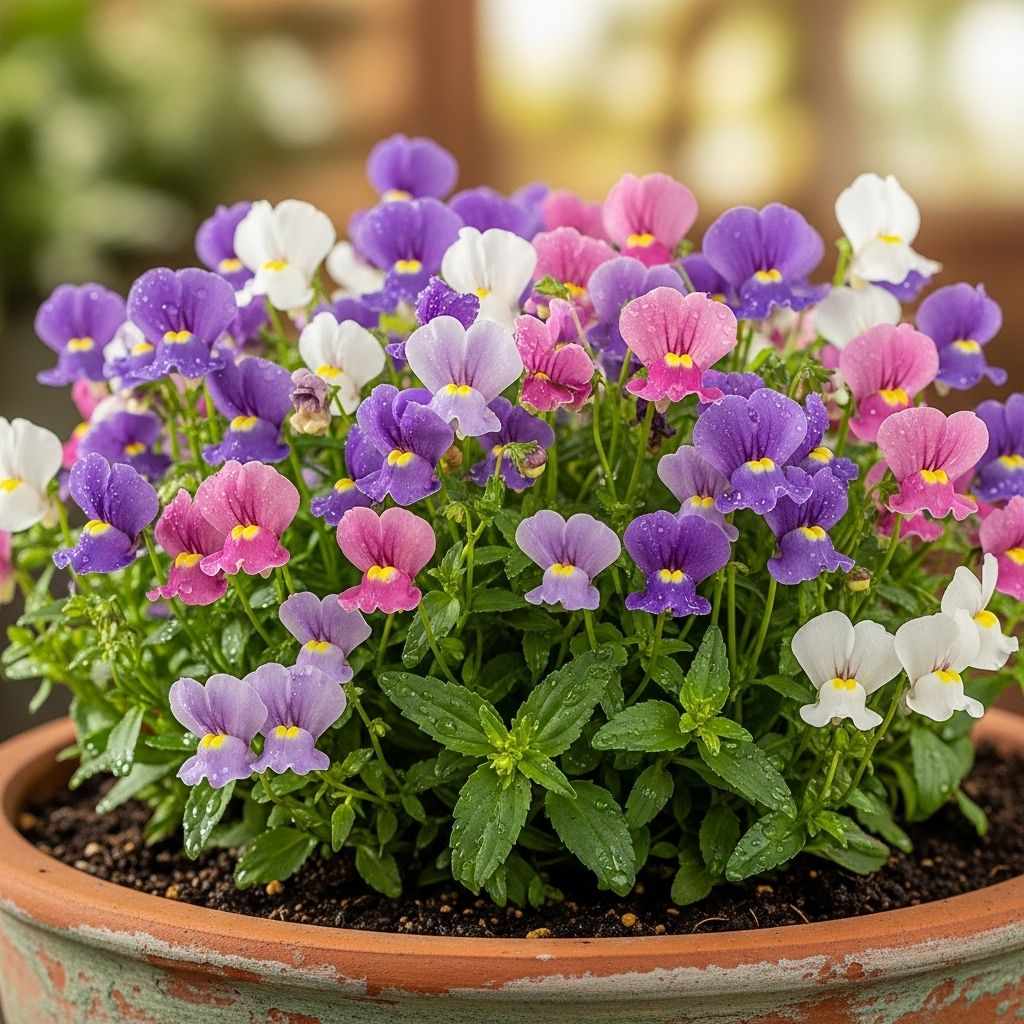
Image: HearthJunction Design Team
Introduction to Nemesia
Nemesia is a delightful flowering plant that brings vibrant colors and a sweet fragrance to gardens and containers. Native to South Africa, these charming plants have gained popularity among gardeners seeking colorful, low-maintenance blooms for their landscapes. With their compact growth habit and prolific flowering, Nemesias are versatile additions to any garden, particularly suited for cool-season displays in beds, borders, containers, and hanging baskets.
These plants feature dainty, orchid-like flowers in a spectrum of colors including white, pink, red, blue, purple, yellow, and bicolor combinations. Their blooms appear in abundance, creating a carpet of color that can transform garden spaces. Most varieties grow between 6 to 12 inches tall, making them perfect for front-of-border plantings, window boxes, and mixed container arrangements.
Nemesia Plant Basics
Before diving into the specifics of Nemesia care, it’s helpful to understand their basic characteristics and growth patterns. These plants are generally considered annuals in most regions, though some varieties may behave as short-lived perennials in mild climates. They typically bloom from spring through early summer, with some varieties offering repeat flowering in fall when temperatures cool again.
Nemesias prefer cool conditions and tend to slow their flowering during the hottest parts of summer, especially in warmer climate zones. Their compact size and dense flowering habit make them excellent choices for filling spaces between larger perennials or creating colorful edges along garden paths.
Best Growing Conditions for Nemesia
Light Requirements
Nemesia plants thrive in full sunlight but appreciate some afternoon shade, particularly in warmer climates. For optimal flowering, provide at least 6-8 hours of direct sunlight daily. In regions with hot summers, planting in a location that receives morning sun and afternoon shade can help extend the blooming period and prevent heat stress. This light balance allows Nemesias to produce the most abundant blooms while protecting them from excessive heat that might cause wilting or reduced flowering.
Temperature Preferences
As cool-season bloomers, Nemesias perform best when temperatures range between 50°F and 75°F (10°C to 24°C). They typically slow down flowering during hot summer months but may resume blooming when temperatures cool in fall. In mild winter areas (USDA zones 9-11), some varieties can overwinter and continue growing as short-lived perennials. However, in colder regions, they’re best treated as annuals or container plants that can be moved to protected areas during winter.
Soil Requirements
The key to successful Nemesia cultivation lies in providing the right soil conditions. These plants require fertile, well-draining soil with a pH level between 6.0 and 7.0 (slightly acidic to neutral). Heavy clay soils can be problematic as they retain too much moisture around the roots, potentially leading to root rot and other diseases.
If your garden has heavy clay soil, amend it thoroughly with organic matter such as compost or well-rotted manure before planting. This improves both drainage and fertility, creating an environment where Nemesia roots can thrive. For container planting, use a high-quality, peat-free potting mix with added perlite or vermiculite to enhance drainage while maintaining adequate moisture retention.
How to Plant Nemesia
Planting Nemesia correctly establishes the foundation for healthy growth and abundant flowering. Whether you’re adding these colorful plants to garden beds or containers, following proper planting techniques ensures they develop strong root systems and adapt quickly to their new environment.
When to Plant
The ideal time to plant Nemesia is in early spring after all danger of frost has passed. In mild climate areas, fall planting can also be successful, allowing the plants to establish before winter and bloom early the following spring. When purchasing nursery plants, look for compact specimens with healthy foliage and some buds but not full flower, as these will establish more effectively than plants already in full bloom.
Garden Bed Planting
To plant Nemesia in garden beds, follow these steps:
- Prepare the soil by loosening it to a depth of about 6 inches and incorporating compost or other organic matter.
- Dig a hole approximately the same width and depth as the root ball of your Nemesia plant.
- Carefully remove the plant from its nursery container, gently teasing any circling roots.
- Place the plant in the hole with the top of the root ball level with the soil surface.
- Backfill with soil, tamping lightly to eliminate air pockets without compacting too firmly.
- Water thoroughly after planting to help settle the soil around the roots.
Space plants at least 6 inches apart to ensure good air circulation, adjusting based on the mature width of your specific variety. Proper spacing helps prevent fungal issues and allows each plant to develop its full, attractive form.
Container Planting
Nemesias excel in containers, where their compact size and prolific flowering create stunning displays. For container planting:
- Choose containers with adequate drainage holes.
- Fill with a high-quality potting mix, ideally one containing perlite or vermiculite for enhanced drainage.
- Plant Nemesias near the edge of containers where their cascading habit can be displayed to best effect.
- In mixed containers, position them toward the front or sides, allowing taller plants to occupy the center or back positions.
- When using containers on hard surfaces, raise them slightly using pot feet or small stones to ensure excess water can drain freely.
For hanging baskets and window boxes, Nemesias create a stunning display when planted around the edges where they can spill over the sides, creating a waterfall of color.
Nemesia Care Guide
Watering Needs
Proper watering is crucial for Nemesia health and flowering. These plants prefer consistently moist but not waterlogged soil. Allow the top inch of soil to dry slightly between waterings, then water thoroughly, ensuring moisture reaches the root zone. During hot weather, container plants may need daily watering, while garden-planted Nemesias typically require less frequent irrigation.
When watering, direct water at the soil level rather than spraying the foliage, as wet leaves can increase susceptibility to fungal diseases. Morning watering is ideal as it allows any moisture on the foliage to dry during the day, reducing disease risk.
Fertilizing Schedule
Regular feeding helps maintain vibrant blooms throughout the growing season. For garden-planted Nemesias, incorporate a slow-release fertilizer into the soil at planting time. Supplement this with liquid fertilizer applications every 4-6 weeks during the growing season.
Container-grown plants have higher nutritional needs due to frequent watering that leaches nutrients from the soil. From midsummer, feed container Nemesias every two weeks with a liquid fertilizer high in potash to encourage continuous flowering. Reduce feeding in very hot weather when plants naturally slow their growth and flowering.
Pruning and Deadheading
Regular maintenance keeps Nemesia plants looking their best and promotes extended blooming. Deadheading—removing spent flowers—encourages plants to produce new blooms rather than setting seed. Simply pinch or snip off faded flowers just below the bloom.
If plants become straggly or leggy, particularly after their initial flush of bloom, a light shearing can rejuvenate them. Trim back about one-third of the plant’s height using clean garden shears. This promotes bushier growth and often stimulates a fresh round of flowering, especially when temperatures cool in late summer or early fall.
Seasonal Care
Spring Care
Spring is the primary planting season for Nemesia. As temperatures warm but remain cool, these plants establish quickly and begin their flowering cycle. Watch for late frosts that could damage tender growth, and be prepared to protect newly planted specimens with frost cloth if needed.
Spring is also an excellent time to start Nemesia from seed indoors, about 8-10 weeks before the last expected frost. Seedlings can be transplanted outdoors once temperatures stabilize above freezing.
Summer Maintenance
During summer heat, Nemesia growth often slows, and flowering may diminish. Provide afternoon shade if possible and increase watering frequency, especially for container plants. A layer of light mulch around garden-planted Nemesias helps keep roots cool and retain moisture.
If plants become heat-stressed and flowering decreases significantly, a light pruning can help them recover when temperatures moderate. Remove about one-quarter of the growth, focusing on any yellowing or damaged foliage.
Fall Rejuvenation
As temperatures cool in early fall, Nemesias often experience a second flush of blooms. This is an ideal time to provide a light application of fertilizer to support this renewed growth. In mild climates, fall-planted Nemesias can establish before winter and provide early spring color the following year.
Winter Protection
In USDA zones 9-11, perennial varieties of Nemesia may survive winter outdoors with minimal protection. Apply a light layer of mulch around the base of the plants to protect the roots from occasional cold snaps.
In colder regions, perennial varieties grown in containers can be overwintered indoors. Move pots to a frost-free location such as a heated greenhouse, porch, conservatory, or cool room with adequate light. Water sparingly during winter dormancy, providing just enough moisture to prevent the soil from completely drying out.
Propagation Methods
Growing from Seed
Starting Nemesia from seed requires patience but allows for growing a wider variety of colors and types than might be available as nursery plants. Sow seeds indoors about 8-10 weeks before the last expected frost date. Use a fine-textured seed starting mix and barely cover the seeds, as they need light to germinate.
Maintain a temperature of around 65°F (18°C) and keep the soil consistently moist until germination occurs, typically within 10-14 days. Once seedlings develop their second set of true leaves, transplant them into individual pots to grow on before hardening off and planting outdoors.
Taking Cuttings
Propagating Nemesia from cuttings is particularly useful for hybrid varieties that don’t come true from seed. In late summer, take 2-3 inch cuttings from the tips of non-flowering shoots. Remove the lower leaves and dip the cut end in rooting hormone powder.
Insert the cuttings into a well-draining rooting medium such as a mixture of perlite and peat-free compost. Maintain high humidity by covering with clear plastic, but remove the covering daily to prevent condensation buildup. Once rooted, typically in 2-3 weeks, pot individually into small containers and grow in a warm, bright location through winter for planting the following spring.
Common Problems and Solutions
Pests
While generally pest-resistant, Nemesias can occasionally suffer from aphid infestations, particularly on new growth. These small insects cluster on stems and the undersides of leaves, sucking plant sap and potentially spreading disease. Control minor infestations by spraying plants with a strong stream of water or applying insecticidal soap according to package directions.
Spider mites may become problematic during hot, dry weather, particularly for indoor-overwintered plants. Increase humidity around plants and treat with appropriate miticides if necessary.
Diseases
Root and stem rot are the most common diseases affecting Nemesia, typically resulting from overwatering or poor drainage. Prevention is the best approach, ensuring soil drains well and avoiding overhead watering that wets the foliage.
Powdery mildew can occur in humid conditions with poor air circulation. Space plants adequately and avoid watering late in the day when foliage won’t have time to dry before nightfall. If needed, treat with a fungicide labeled for ornamental plants.
Design Ideas with Nemesia
The versatility of Nemesia makes it an excellent choice for various garden settings. In mixed borders, these plants create colorful drifts when planted in groups of five or more. Their compact size makes them perfect for the front of borders, where their bright colors can be fully appreciated.
In container gardens, Nemesias work well as fillers between larger focal plants or as spillers along the edges. Their continuous blooming habit provides long-lasting color, especially when deadheaded regularly. For hanging baskets, trailing varieties create cascades of color that add vertical interest to patios and entryways.
Color combinations are endless with the wide range of Nemesia hues available. Try pairing blue or purple varieties with complementary yellow flowers for a striking contrast, or create a pastel theme with soft pink and white Nemesias combined with silver-leaved plants.
Frequently Asked Questions (FAQs)
Q: Will Nemesia flower all summer?
A: Nemesia typically blooms heavily in spring and early summer, with flowering often slowing during the hottest part of summer, especially in warm climates. With proper care including regular deadheading, adequate water, and some afternoon shade in hot areas, many varieties will resume flowering when temperatures cool in fall.
Q: Can Nemesia survive winter?
A: In mild climate areas (USDA zones 9-11), some Nemesia varieties can survive winter outdoors and return the following year. In colder regions, they’re typically grown as annuals or can be overwintered indoors in containers placed in a cool, frost-free location with minimal watering.
Q: Why has my Nemesia stopped flowering?
A: Several factors can cause Nemesia to stop flowering: heat stress during summer, insufficient light, lack of deadheading, or inadequate nutrients. Regular deadheading, providing some afternoon shade during hot weather, and feeding with a high-potash fertilizer can help encourage new blooms.
Q: How often should I water Nemesia?
A: Water Nemesia when the top inch of soil feels dry to the touch. Container plants typically need more frequent watering than those in the ground, sometimes requiring daily watering during hot weather. Always ensure good drainage, as Nemesia is susceptible to root rot in constantly wet conditions.
Q: Do Nemesia plants spread?
A: Nemesia has a mounding or slightly trailing habit rather than an aggressive spreading nature. Plants typically grow 6-12 inches tall and about as wide, creating full but contained clumps. They don’t typically self-seed prolifically enough to become invasive.
References
Read full bio of medha deb







